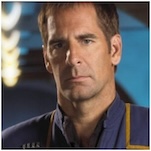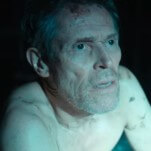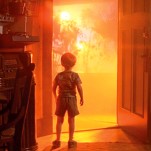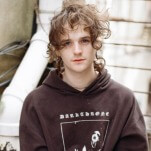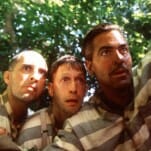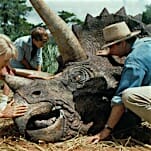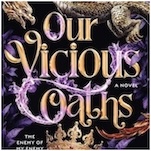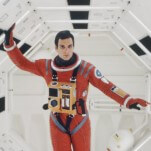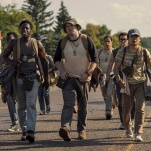The Deepest Breath Delves into the Dazzling, Dangerous World of Competitive Freediving

In competitive free-diving, adrenaline-seekers plunge hundreds of feet into the ocean with just a breath of air to sustain themselves for the arduous journey below and back to the surface. The Deepest Breath, an exceptional Netflix documentary written and directed by Laura McGann, uses incredible archival footage to help recount the recent history of this intense sport. While most docs would be wary to explicitly state that certain elements have been manipulated to suit the filmmaker’s narrative whims, McGann’s film is intentionally structured to introduce viewers to world record-breaking Italian freediver Alessia Zecchini and renowned Irish safety diver Stephen Keenan – and the niche extreme sport they love – in a way that’s both informative and anxiety-inducing. Through carefully reconstructing the story of Zecchini and Keenan’s eventual alliance (and implied romance), viewers both familiar with and new to the topic may find newfound understanding of the subjects.
The film opens with years-old footage of Zecchini driving along the sandy shores of Long Island (in the Bahamas, not New York), which we later learn is the location of the famous Vertical Blue freediving competition. An unseen Italian woman in the car – likely the person filming – asks Zecchini how she feels about death. “Honestly, I’ve never thought about it,” she responds. “I think if someone has to die, they will.” The chilling nonchalance of her answer already plants speculative seeds about her own fate, but those even tangentially tuned-in to the sport know that she’s currently one of the most recognizable and esteemed figures in the game. However, her words are no less a harbinger for encroaching tragedy on the horizon.
The Deepest Breath goes on to lay the groundwork: Zecchini’s lifelong aspirations to become a freediver, inspired by Russian icon Natalia Malchonova; the intense training she undertook to make a name for herself; the tenacity that grew in her to one day hold a world record. Her father appears in talking head segments to add insight into her upbringing and evolving personage, a certain worry for his daughter permanently etched into the contours of his face.
The film then pivots into exploring the childhood and adult exploits of Stephen Keenan, from the claustrophobia he felt in his Dublin neighborhood to a multi-country trek through Africa in his 20s. Again, Keenan’s father is interviewed to provide further details (Keenan’s mother passed away from cancer decades ago), but there’s a thick melancholy attached to his anecdotes and recollections. Because both fathers speak about their children in the past tense and neither Zecchini or Keenan initially appear in the film themselves, there’s an unshakable feeling of loss embedded in The Deepest Breath from the get-go.
Learning the background and terminology inherent to the film’s subjects and the sport they compete in is vital, particularly when gauging the imminent threat of death and bodily harm that lingers just under these blue depths. On the way down, one can suffer from “lung squeeze,” which occurs at pressures 30-40 meters underwater and results in coughing up blood and the subsequent scarring of lung tissue. On the way up, the deadliest threat is blackouts, where the brain suddenly shuts down due to lack of oxygen. This is what causes 99% of fatalities in the sport, typically by way of drowning, and usually happens within the last 10 meters before an athlete reaches the surface. Avoiding these potentially lethal physical reactions is precisely how Keenan made a name for himself as a safety diver, or someone who meets the freediver 20-30 meters underwater to monitor their ascent and ensure they don’t need any aid (and is ready to act fast if they do).



